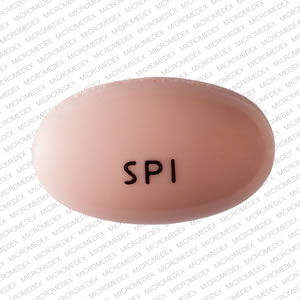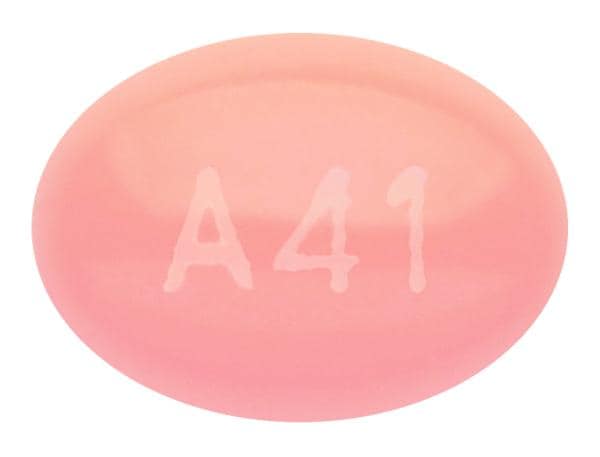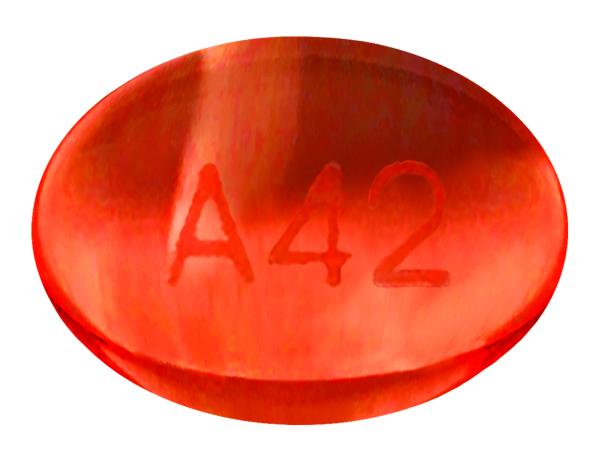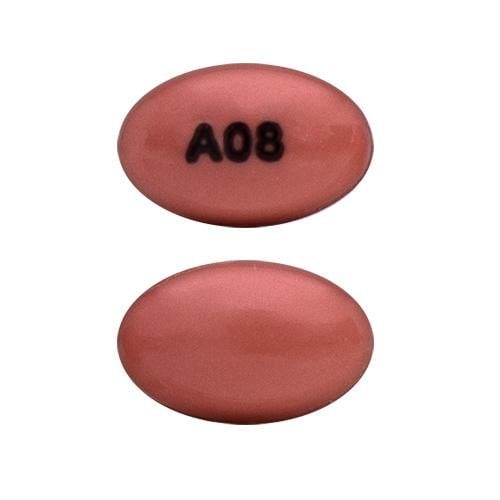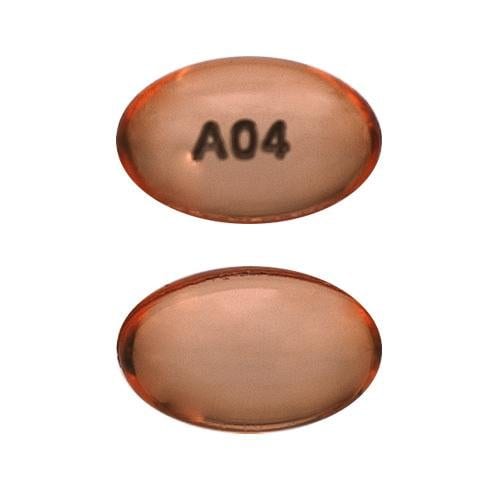Dosage Forms
Excipient information presented when available (limited, particularly for generics); consult specific product labeling.
Capsule, Oral:
Amitiza: 8 mcg
Amitiza: 24 mcg [contains fd&c red #40, fd&c yellow #10 (quinoline yellow)]
Pharmacology
Mechanism of Action
A chloride channel activator that acts locally on the apical membrane of the gastrointestinal tract to increase intestinal fluid secretion and improve fecal transit. This action bypasses the antisecretory effects of opiates, which suppress secretomotor neuron excitability.
Pharmacokinetics/Pharmacodynamics
Absorption
Systemic: Parent drug: Poor (below levels of detection); Active metabolite (M3): Low
Distribution
Minimal beyond GI tissue
Metabolism
Rapid and extensive within stomach and jejunum by carbonyl reductase to M3 (active metabolite) and others
Excretion
Parent drug and M3: Feces (trace amounts)
Time to Peak
Plasma: M3: ~1.1 hour
Half-Life Elimination
M3: 0.9 to 1.4 hours
Protein Binding
~94%
Use in Specific Populations
Special Populations: Hepatic Function Impairment
Cmax and AUC of active metabolite M3 are increased in patients with moderate-to-severe hepatic impairment.
Use: Labeled Indications
Chronic idiopathic constipation: Treatment of chronic idiopathic constipation (CIC) in adults
Irritable bowel syndrome with constipation: Treatment of irritable bowel syndrome (IBS) with constipation in women ≥18 years of age
Opioid-induced constipation: Treatment of opioid-induced constipation (OIC) in adults with chronic noncancer pain, including patients with chronic pain related to prior cancer or its treatment who do not require frequent (eg, weekly) opioid dosage escalation.
Contraindications
Known or suspected mechanical gastrointestinal (GI) obstruction
Dosage and Administration
Dosing: Adult
Chronic idiopathic constipation: Oral: 24 mcg twice daily
Irritable bowel syndrome with constipation: Females ≥18 years: Oral: 8 mcg twice daily
Opioid-induced constipation: Oral: 24 mcg twice daily
Dosing: Geriatric
Refer to adult dosing.
Administration
Oral: Administer with food and water. Swallow whole; do not break or chew.
Dietary Considerations
Take with food and water to decrease nausea.
Storage
Store at 25°C (77°F); excursions permitted to 15°C to 30°C (59°F to 86°F). Protect from light and extreme temperatures.
Lubiprostone Images
Drug Interactions
Levomethadone: May diminish the therapeutic effect of Lubiprostone. Monitor therapy
Methadone: May diminish the therapeutic effect of Lubiprostone. Monitor therapy
Adverse Reactions
>10%:
Central nervous system: Headache (2% to 11%)
Gastrointestinal: Nausea (8% to 29%; males: 8%; older adults: 19%), diarrhea (7% to 12%)
1% to 10%:
Cardiovascular: Edema (≤3%), chest discomfort (≤2%), chest pain (≤2%), peripheral edema (1%)
Central nervous system: Dizziness (3%), fatigue (≤2%)
Gastrointestinal: Abdominal pain (4% to 8%), flatulence (4% to 6%), abdominal distention (3% to 6%), abdominal distress (3%), loose stools (≤3%), vomiting (≤3%), dyspepsia (≤2%), xerostomia (≤1%)
Respiratory: Dyspnea (≤3%)
<1%, postmarketing, and/or case reports: Anorexia, anxiety, arthralgia (Anton 2017), asthenia, back pain (Anton 2017), bloody diarrhea (Anton 2017), bowel urgency, constipation, cough, decreased appetite, decreased serum potassium, depression, diaphoresis, dysgeusia, eructation, erythema, fecal impaction, fecal incontinence, fibromyalgia syndrome, frequent bowel movements, gastritis, gastroesophageal reflux disease, gastrointestinal disease, hyperhidrosis, hypersensitivity reaction (including skin rash, swelling, throat tightness), hypotension, increased serum alanine aminotransferase, increased serum aspartate aminotransferase, influenza, ischemic colitis, joint swelling, lethargy, malaise, muscle cramps, muscle spasm, myalgia, neck pain (Anton 2017), pain, palpitations, pharyngolaryngeal pain, pollakiuria, rectal hemorrhage, respiratory tract infection (Anton 2017), syncope, tachycardia, tremor, urinary tract infection, weight gain
Warnings/Precautions
Concerns related to adverse effects:
- Dyspnea: Has been observed with use; often described as chest tightness and difficulty in taking a breath; generally occurs as an acute onset (within 30 to 60 minutes following the first dose) and resolves within a few hours; however, has been frequently reported with subsequent dosing.
- Nausea: Nausea may occur; administer with food to reduce symptoms.
- Syncope/hypotension: May occur (some resulting in hospitalization) and generally resolved following discontinuation or prior to the next dose; reoccurrence has been reported with subsequent doses. Most cases occurred when taking 24 mcg twice daily, within an hour after the first dose or subsequent doses, or during concomitant use of medications known to decrease blood pressure.
Disease-related concerns:
- Diarrhea: Avoid use in patients with severe diarrhea.
- Gastrointestinal obstruction: Symptoms of mechanical GI obstruction should be evaluated before prescribing this medicine; use is contraindicated in patients with bowel obstruction.
- Hepatic impairment: Patients with moderate-to-severe hepatic impairment (Child-Pugh class B or C) have higher systemic drug exposure; dosage adjustment may be recommended, depending on the indication and severity of hepatic impairment.
Special populations:
- Males: Not approved for use in males with irritable bowel syndrome with constipation.
Other warnings/precautions:
- Appropriate use: Efficacy of lubiprostone in the treatment of opioid-induced constipation in patients taking diphenylheptane opioids (eg, methadone) has not been established.
Pregnancy
Pregnancy Considerations
Adverse events have been observed in animal reproduction studies.
Patient Education
What is this drug used for?
- It is used to treat constipation.
- It is used to treat irritable bowel syndrome.
Frequently reported side effects of this drug
- Headache
- Nausea
- Abdominal pain
- Passing gas
- Bloating
Other side effects of this drug: Talk with your doctor right away if you have any of these signs of:
- Chest pain
- Severe diarrhea
- Severe dizziness
- Passing out
- Shortness of breath
- Signs of a significant reaction like wheezing; chest tightness; fever; itching; bad cough; blue skin color; seizures; or swelling of face, lips, tongue, or throat.
Note: This is not a comprehensive list of all side effects. Talk to your doctor if you have questions.
Consumer Information Use and Disclaimer: This information should not be used to decide whether or not to take this medicine or any other medicine. Only the healthcare provider has the knowledge and training to decide which medicines are right for a specific patient. This information does not endorse any medicine as safe, effective, or approved for treating any patient or health condition. This is only a brief summary of general information about this medicine. It does NOT include all information about the possible uses, directions, warnings, precautions, interactions, adverse effects, or risks that may apply to this medicine. This information is not specific medical advice and does not replace information you receive from the healthcare provider. You must talk with the healthcare provider for complete information about the risks and benefits of using this medicine.
